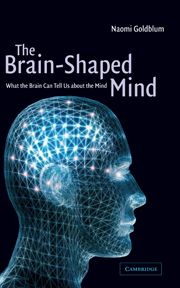Book contents
- Frontmatter
- Contents
- Preface
- Figure permissions and acknowledgments
- 1 Introduction
- 2 What the brain cannot tell us about the mind
- 3 How neurons form networks
- 4 Theories and models of how the mind functions
- 5 What are connectionist networks?
- 6 How our networks learn
- 7 Connecting the networks: how different things are related
- 8 Evidence for connectionist models
- 9 Two different types of memory
- 10 Coping with disaster
- 11 Practical implications
- 12 Criticism of connectionist theory
- Annotated references and suggested readings
- Index
9 - Two different types of memory
Published online by Cambridge University Press: 02 December 2009
- Frontmatter
- Contents
- Preface
- Figure permissions and acknowledgments
- 1 Introduction
- 2 What the brain cannot tell us about the mind
- 3 How neurons form networks
- 4 Theories and models of how the mind functions
- 5 What are connectionist networks?
- 6 How our networks learn
- 7 Connecting the networks: how different things are related
- 8 Evidence for connectionist models
- 9 Two different types of memory
- 10 Coping with disaster
- 11 Practical implications
- 12 Criticism of connectionist theory
- Annotated references and suggested readings
- Index
Summary
Until now we have been discussing how we learn and organize our general knowledge – the names and properties of things, such as dogs and cats, or mothers and fathers, and the relations between them. All these may be called permanent memories, as we generally retain this sort of knowledge throughout life, and it changes only occasionally, such as when we hear about a new type of mother known as a “surrogate mother.” But when we think of all this knowledge as a type of memory, we immediately begin to think of the other kinds of things we need to remember – namely, the specific things that happen to us or that we do in our daily life, and the things we are intending to do. These may be called temporary memories, as they involve specific occasions and do not need to be remembered for a long time. In this chapter I discuss some of the essential differences between the two types of memory and describe what is known about the way they are embodied in different types of neural networks in the brain.
Differences between the two types of memory
Permanent and temporary memories differ in many ways. For example, the fact that a kitchen is a place to eat is part of my permanent memory, while the fact that I opened up a new box of cornflakes this morning is part of my temporary memory. Permanent memory is time- and person-independent: The truth of the statement “A kitchen is a place to eat” does not change if I say it today or tomorrow, and it does not depend on whether I say it or you say it.
- Type
- Chapter
- Information
- The Brain-Shaped MindWhat the Brain Can Tell Us About the Mind, pp. 87 - 94Publisher: Cambridge University PressPrint publication year: 2001



